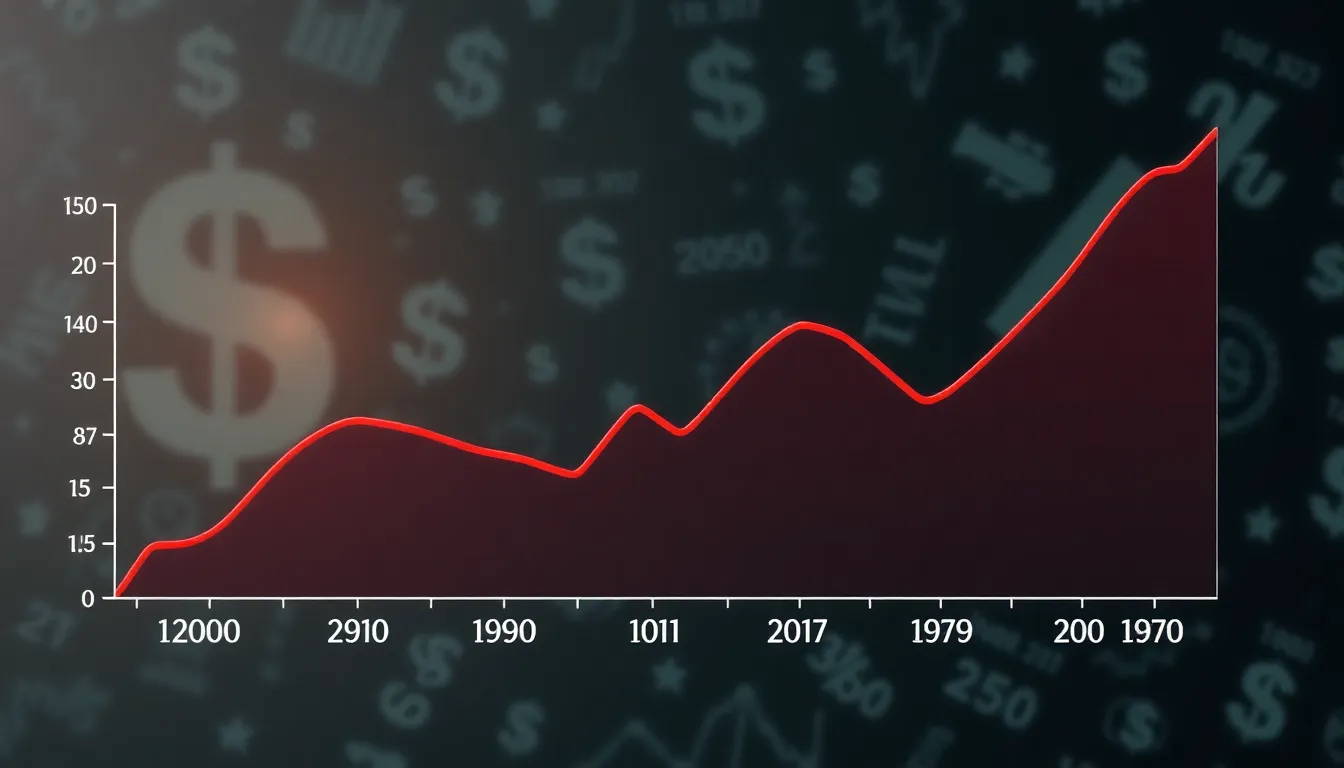The WSJ Prime Rate serves as a key benchmark for interest rates across various loans and credit products in the United States. Financial institutions often use this rate to determine the interest they charge on everything from mortgages to credit cards. As such, understanding the current WSJ Prime Rate is crucial for consumers and businesses alike, influencing borrowing costs and investment decisions.
Today, the WSJ Prime Rate reflects the economic climate and central bank policies. Fluctuations in this rate can signal shifts in monetary policy and affect overall economic activity. Staying informed about the latest updates on the WSJ Prime Rate not only helps individuals make better financial choices but also provides insight into the broader economic landscape.
Table of Contents
ToggleUnderstanding WSJ Prime Rate
The WSJ Prime Rate serves as a critical benchmark for interest rates in the U.S. economy. Financial institutions widely use this rate to determine interest charges on loans, making it essential for consumers and businesses alike.
Definition of WSJ Prime Rate
The WSJ Prime Rate represents the interest rate that financial institutions charge their most creditworthy customers. Derived from the Wall Street Journal’s reports, this rate typically equals the federal funds rate plus a margin. Banks adjust the WSJ Prime Rate according to the economic climate and monetary policy decisions made by the Federal Reserve.
Importance of WSJ Prime Rate
The WSJ Prime Rate plays a vital role in various financial products, influencing rates on mortgages, auto loans, and credit cards. Understanding fluctuations in this rate helps consumers assess potential borrowing costs. Businesses also consider the WSJ Prime Rate when making decisions regarding investment and expansion, as it offers insights into current lending conditions and economic health. Staying informed about this benchmark assists in navigating financial planning effectively.
Current WSJ Prime Rate Today

As of today, the WSJ Prime Rate stands at 8.25%. This rate plays a crucial role in determining interest rates on various loans and credit products.
Latest Updates
The WSJ Prime Rate is updated regularly based on shifts in the federal funds rate, which currently impacts economic conditions and lending practices. Financial institutions typically change their rates in alignment with the Prime Rate, affecting mortgages, personal loans, and credit cards. Recent updates demonstrate a correlation between the Prime Rate and economic indicators, reflecting changes in inflation and employment rates.
Historical Trends
The WSJ Prime Rate has experienced significant fluctuations over the years. The following table outlines key historical rates:
| Year | WSJ Prime Rate |
|---|---|
| 2020 | 3.25% |
| 2021 | 3.25% |
| 2022 | 5.50% |
| 2023 | 8.25% |
These trends indicate how monetary policy has evolved in response to varying economic conditions. Increased rates often signal efforts to combat inflation, while lower rates can stimulate economic growth. Understanding these historical trends aids consumers and businesses in anticipating future rate movements and adapting their financial strategies accordingly.
Factors Influencing WSJ Prime Rate
Several critical factors impact the WSJ Prime Rate, shaping the landscape of borrowing costs and financial decisions.
Economic Indicators
Economic indicators serve as essential metrics in assessing financial health and stability. Inflation rates, unemployment figures, and Gross Domestic Product (GDP) growth significantly influence the WSJ Prime Rate. For instance, rising inflation often prompts adjustments in interest rates to maintain economic balance. Conversely, low unemployment rates can signal economic growth, leading to potential rises in the Prime Rate as demand for credit increases. Monitoring these indicators provides insights into potential adjustments in borrowing costs and helps consumers and businesses prepare for future financial shifts.
Federal Reserve Actions
Federal Reserve actions play a pivotal role in determining the WSJ Prime Rate. The Federal Open Market Committee (FOMC) meets regularly to set the federal funds rate, which directly influences the Prime Rate. Rate hikes typically occur in response to inflationary pressures or a strengthening economy. When the FOMC reduces rates, borrowing becomes cheaper, which can lower the Prime Rate. Understanding the direction of Federal Reserve policies helps consumers and businesses anticipate changes in interest rates and adjust their borrowing strategies accordingly.
How WSJ Prime Rate Affects Consumers
The WSJ Prime Rate significantly impacts consumers’ financial choices, influencing costs on loans, mortgages, and credit cards. Understanding its effects helps consumers make informed borrowing decisions.
Impact on Loans and Mortgages
Consumers’ borrowing costs for loans and mortgages are directly linked to the WSJ Prime Rate. When the Prime Rate rises, interest rates on variable-rate loans increase. For example, a home equity line of credit (HELOC) tied to the Prime Rate may become more expensive, increasing monthly payments for borrowers. Conversely, a decrease in the Prime Rate lowers these costs, making loans more affordable. Historical data shows that as the Prime Rate increased from 3.25% in 2020 to 8.25% in 2023, many buyers faced higher borrowing costs, which affected housing affordability and purchasing power.
Influence on Credit Card Rates
The WSJ Prime Rate also plays a crucial role in determining credit card interest rates. Credit card issuers frequently adjust their rates based on changes to the Prime Rate. Higher Prime Rates mean higher interest charges, increasing the cost of carrying a balance. For instance, if the Prime Rate increases from 8% to 8.25%, consumers may experience a similarly incremental increase in their credit card interest rates. This shift can lead to higher overall debt for individuals who don’t pay their balances in full. Staying aware of the Prime Rate helps consumers strategize their credit use and manage debt more effectively.
Keeping an eye on the WSJ Prime Rate is vital for anyone navigating the financial landscape. At 8.25% today, this rate influences borrowing costs across various loans and credit products. Understanding its implications can help consumers make better financial decisions and businesses strategize effectively. As economic conditions and Federal Reserve actions continue to evolve, staying informed about the Prime Rate allows individuals and organizations to adapt their financial strategies. Awareness of this key benchmark can lead to smarter borrowing and investment choices in an ever-changing economic environment.




